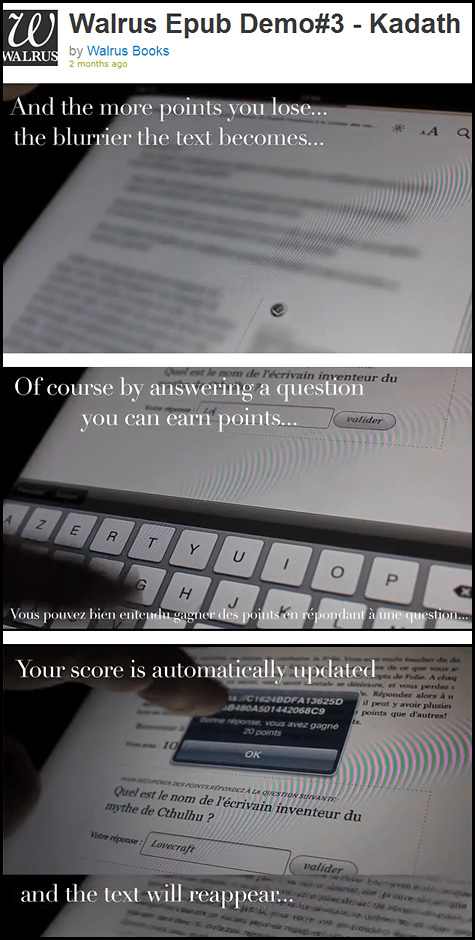Video on the web — from DiveIntoHTML5.com
Excerpt:
Anyone who has visited YouTube.com in the past four years knows that you can embed video in a web page. But prior to HTML5, there was no standards-based way to do this. Virtually all the video you’ve ever watched “on the web” has been funneled through a third-party plugin — maybe QuickTime, maybe RealPlayer, maybe Flash. (YouTube uses Flash.) These plugins integrate with your browser well enough that you may not even be aware that you’re using them. That is, until you try to watch a video on a platform that doesn’t support that plugin.
HTML5 defines a standard way to embed video in a web page, using a <video> element. Support for the <video> element is still evolving, which is a polite way of saying it doesn’t work yet. At least, it doesn’t work everywhere. But don’t despair! There are alternatives and fallbacks and options galore.
…
Professor Markup Says
There is no single combination of containers and codecs that works in all HTML5 browsers. This is not likely to change in the near future. To make your video watchable across all of these devices and platforms, you’re going to need to encode your video more than once.
For maximum compatibility, here’s what your video workflow will look like:
- Make one version that uses WebM (VP8 + Vorbis).
- Make another version that uses H.264 baseline video and AAC “low complexity” audio in an MP4 container.
- Make another version that uses Theora video and Vorbis audio in an Ogg container.
- Link to all three video files from a single
<video> element, and fall back to a Flash-based video player.














